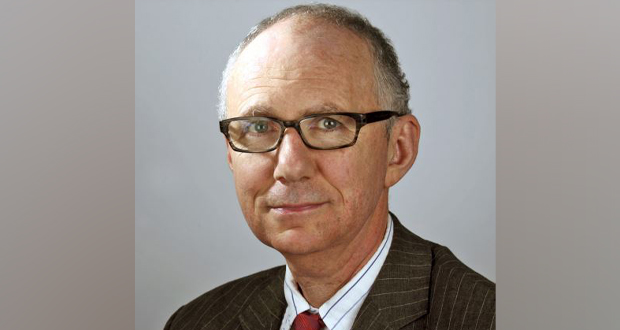Publicité
Interview…Anatole Kaletsky
“We are entering a period of higher interest rates”
Par
Partager cet article
Interview…Anatole Kaletsky
“We are entering a period of higher interest rates”

Anatole Kaletsky, Co-founder, Chairman and Chief Economist of Gavekal.
Partner of Gavekal, a world investment company which has recently acquired IPRO Ltd, Anatole Kaletsky explains why the world economy is moving towards a higher interest rates environment. In an interview with “l’express” during a recent visit in Mauritius, Kaletsky shares his views on global investors’ move shifting from developed countries to emerging ones following the Ukrainian war. He emphasizes the importance for policymakers to focus on debt metrics, specifically the level of external debt to GDP and its servicing.
Last year, there were widespread fears that the global economy would be heading towards a severe recession following the decision of central banks to raise interest rates in response to the global inflation crisis as a result of sharp price increases. This has not happened. Instead, global GDP has grown by 3% and it seems that the same trend will follow this year. Why?
I always thought that the recession forecast last year was wrong. As a group, we were already outspoken at the end of 2022 in challenging these signs of world reces- sion, particularly in the US. I think it was early January 2023 that Bloomberg published a survey stating that the probability that the US would be facing a recession was real. At that time, I wrote a series of ar- ticles and talked to many clients, explaining to them the reasons why a recession would not happen in the US despite the fact there were signs of recession in some parts of the world, particularly in Europe, where it did happen. This was mainly the result of the weak economic activity of Germany and some other countries which were exposed to the impact of the Ukrainian war, with prices of energy and foods on the rise. However, these hikes in food and energy prices did not really affect the US economy. On the contrary, in comparable terms, they were favorable to the US as, throughout the years, Americans have become by far the biggest energy producer, outperforming Saudi Arabia.
What people got wrong with the American economy was the impact of its fiscal and monetary policy. Could you elaborate?
In monetary policy, I have the strong belief, which was controversial at that time, that it’s the level of interest rate that matters and not the rate of change. As a result, a lot of people were arguing last year, and also in 2022, that it was the most aggressive tightening policy that the world has been seeing since the 1980s. This is so because, at that time, the interest rate went up to 5% in just over 12 or 15 months. It was a wrong analysis given the fact that if the interest rates did rise rapidly, it was from a low base level. In fact, that initial level was the lowest level since the last century.
I must also add that following the Covid crisis, there was a tremendous fiscal stim- ulus in 2020/21, with its effects still being felt last year. The reason being that the ad- ditional money the population had pocketed through different subsidies was still in the bank accounts. As the saving rates were still very high, there was a safety net for economic activities with consumption which was still high with the rise of interest rates.
If you combine the impact of the energy prices, the tightening of the monetary policy and the big fiscal stimulus, it did not surprise me that the US had a strong period of growth last year. At the same time, we should not hide the fact that China has a weaker economy, contrary to what was expected. After its long Covid lockdown, everybody was of the view that China would open its borders rapidly and its economy would grow quickly. This did not happen. Nevertheless, the country did grow by 4% to 5%. My understanding is that the US and China would continue to grow in 2024 while Europe would be the weak spot in the world and would continue to be so as long as the Ukraine war goes on.
Have you factored in the impact of the Chinese property crash on its growth forecast?
The property market in China is a matter of big concern and its collapse is going to weaken its economy because the Chinese authorities have done nothing to stabilize it. Besides the property and construction sector, we believe that China is growing at about its new trend rate between 4% and 4.5%. Exports are also increasing despite protectionist measures imposed by the US against China. We also note that the domestic demand has picked up. Having said that, if the authorities have not stabilized the property sector to avoid its crash, they have at least done a good job by isolating it from other spill-over effects on other sectors.
You are a firm believer that the world economy is entering a new era of permanently higher interest rates despite the Fed’s ongoing monetary tightening policy. In the US, inflation has fallen to 2%. Do you see the interest rates maintained at the same level? What does it imply to investors at large?
I strongly believe that we are entering a period of higher interest rates, not necessarily of high interest rates. My view is that interest rates will return or have already returned to a sort of normality that existed before the global financial crisis, with the normal rate ranging from 4.5% to 5%. Even if the central banks will be cutting interest rates within the next 12 months, maybe a 50 to 100 basis points in the US, we will have stabilized the rates around 3% to 4.5% in advanced economies.
Today, long-term rates are much lower than the short-term ones. They should be structured to be at least 50% to 100% basis points higher than the short-term rates. Over the next years, we will need to have an upward sloping yield curve instead of a downward sloping yield curve. We should know by definition that if we lend money to the government for a period of 10 to 30 years, we should get a higher return than if we lend for a short period of time. However, we note that for a quite longer period we have had this exceptional situation where the government pays less for longer periods than for shorter ones. This will need to change.
We think that long-term rates will turn out to be from 4.5% to 6% in the US, maybe less in Europe, that is around 2.5% to 3%, but it will never be 0% again as we have seen in the past. Of course, we should expect that new rates will change the background for asset prices, including equities and property because the evaluation of all assets depends on the long-term rates.
With wars in Ukraine and in the Middle East, coupled with geopolitical tensions in some regions, financial markets could be facing high volatility. Do you see, as a result, more interests from investors in emerging markets? Is there a shift from developed markets to emerging economies?
The shift from developed countries to emerging ones has already started and investors will continue to do it in a substantial way in the years to come, partly because the prospects in these emerging markets are quite positive. By emerging countries, I mean those countries in Asia, like Indonesia, Vietnam and Thailand, among others, which hold great promises for investors. China is in a different category.
It is clear that with the division of the world into two camps which are not quite at war, but in a state of permanent conflict, with America and Europe on one side and Russia, China and some other countries on the other side, we have in between the non-aligned countries which are neither with America nor with Russia. Today, the competition between these two major economic forces will be more on economic and financial issues.
For non-aligned countries, like Mauritius, it means financial support not only from American-dominated institutions like the World Bank and the IMF but also financial support from China, where financial assistance can be sought both from the public and private sectors. This brings me to the idea that ultimately the war in Ukraine and the prolonged conflict in the Middle East do favor in the long run the non-aligned countries.
Like Mauritius, the US will be going through an electoral year in 2024. Right now, the US economic fundamentals are positive, with a solid employment market, an accelerated growth rate and an inflation which has now decreased. To what extent the current state of the US economy could impact the results of the forthcoming presidential elections?
I would say that the economy always matters in an election. Historically, in the US, it has proved to be the largest single factor, like in many democratic countries, that decides the result of an election. I can imagine it is also the case in Mauritius. However, whether it will be the dominant factor in the choice of the next president remains to be seen and will be an important test.
Of course, if the presidential election would be only on economic issues, Joe Biden would certainly be on course for an easy win. This is because, as you rightly pointed out, the US economy is in very good shape with a low level of unemployment, an inflation rate on a decreasing trend and real income on the rise. In my opinion, the US economy will even get better in 2024. Despite these good results on the economic front, we see Joe Biden still struggling against Donald Trump for other factors.
Mauritius has a relatively huge debt to GDP ratio. What are your views on public debt and what is the relationship you make between the government debt and the average GDP?
My view on the public debt, which may not be shared by other economists, is that for advanced economies, public debt to GDP is almost irrelevant and a less important indicator than the Washington Consensus suggested in 1990s. The idea that 60% Debt-to-GDP is somewhat of a norm that all countries should follow or aim has never had any empirical or theoretical justifications for large developed economies like the US, Germany, Italy and Japan. The two economists, Carmen Reinhart and Kenneth Rogoff, who came out with this policy of 60% Debt-to-GDP ratio, have brought a dividing line between financial stability and non-stability, and their work has been seriously questioned and undermined by other research works on this issue.
I am of the opinion that for countries like the US, Italy and Japan, the 60% Debt-to-GDP ratio is not important. The Covid experience has shown an explosion of Debt-to-GDP ratios all over the world. What really matters is whether the debt is mainly internal, meaning it is financed locally or external, when it is financed by foreign currencies. As an example, Japan has a Debt-to-GDP ratio of 250%, but this debt is primarily financed in its own currency. At the end of the day, what policymakers should focus on is the level of the external debt to GDP and its servicing.
Publicité
Publicité
Les plus récents






